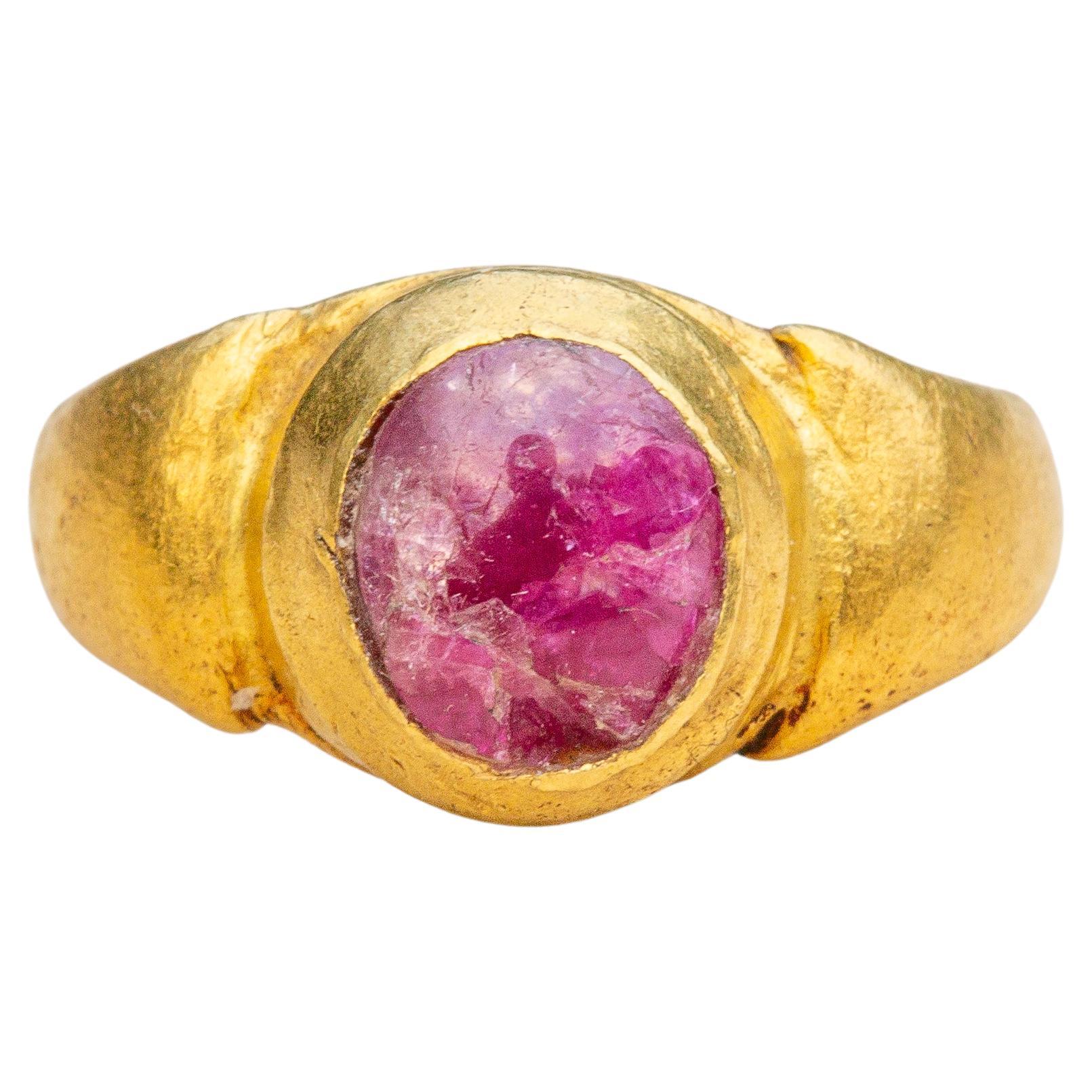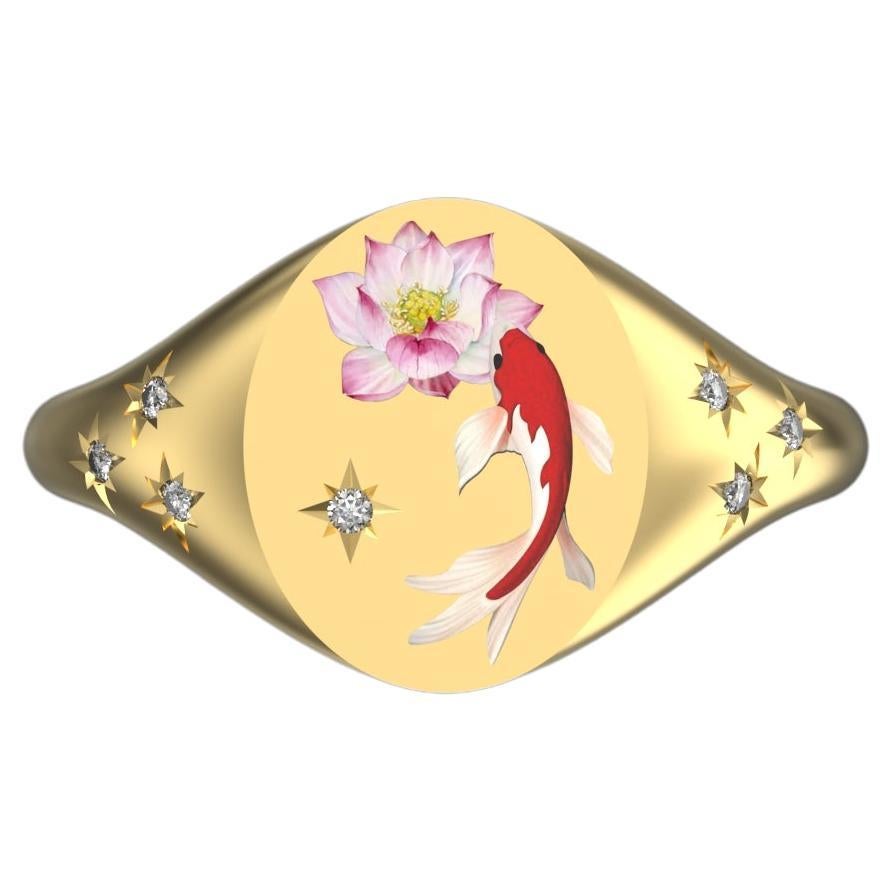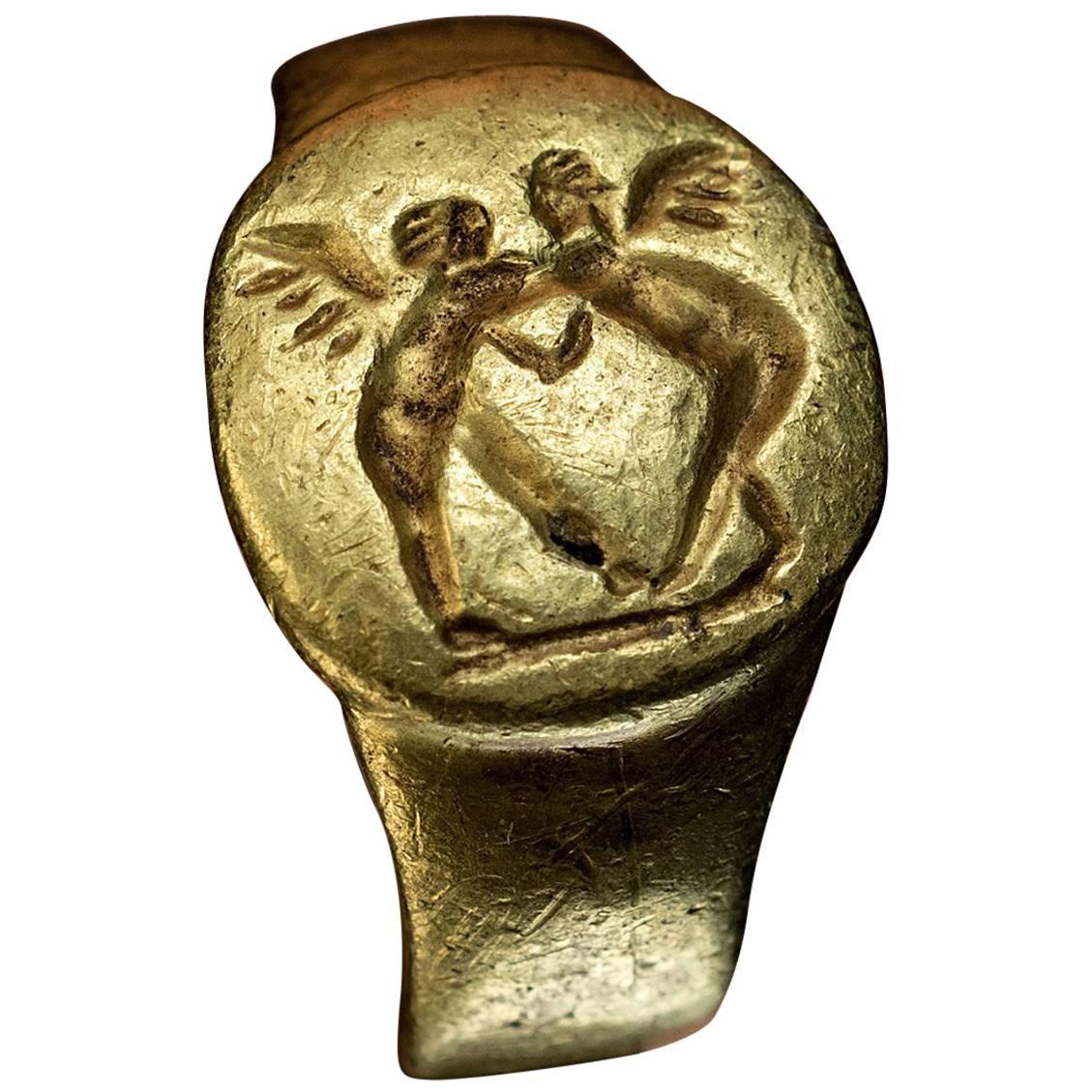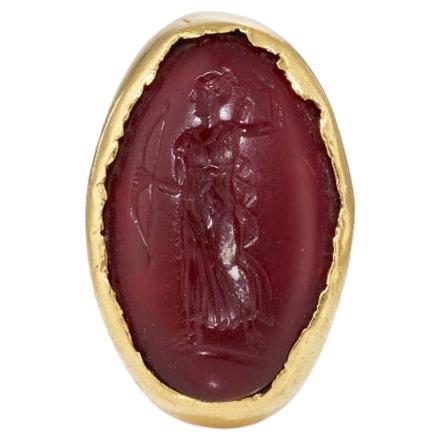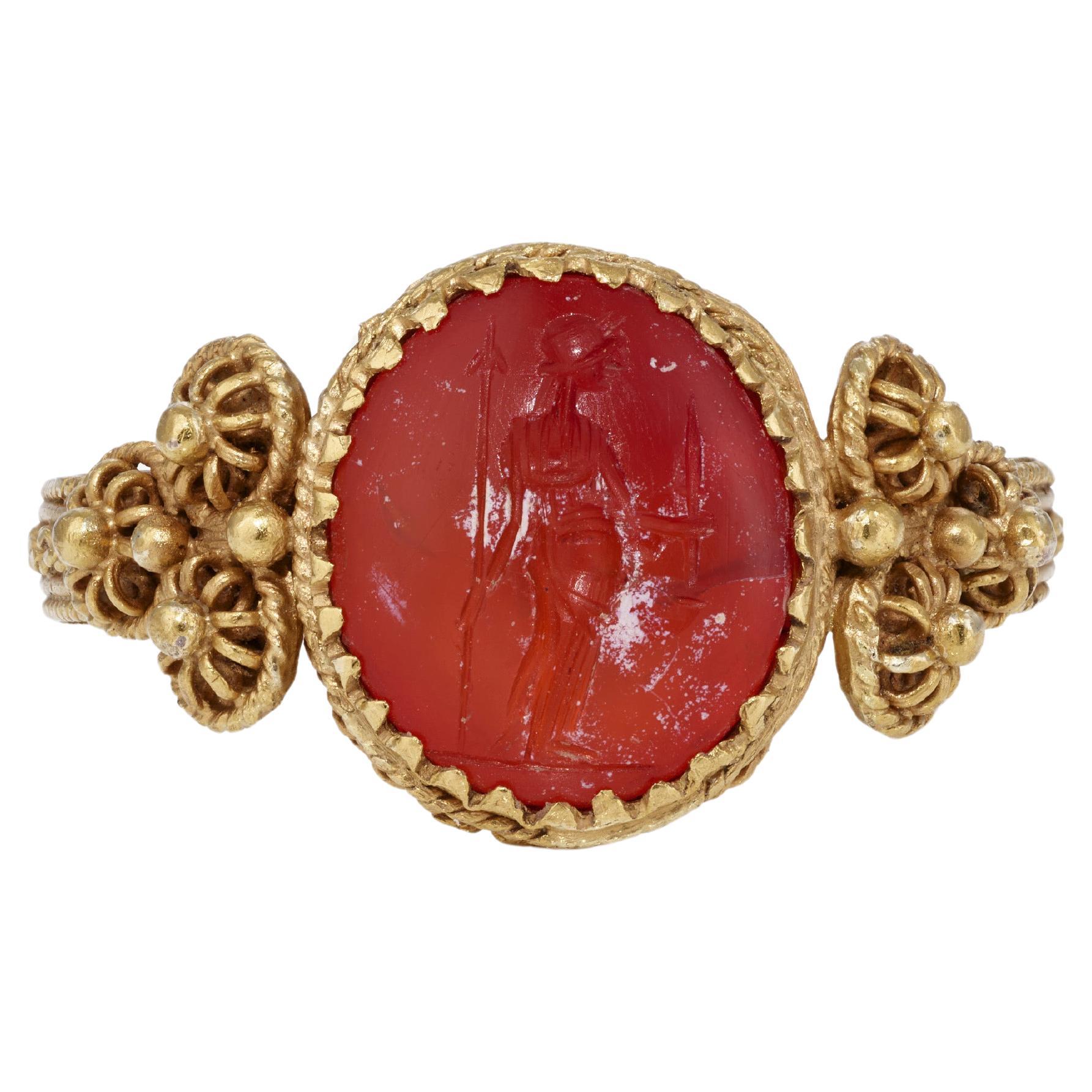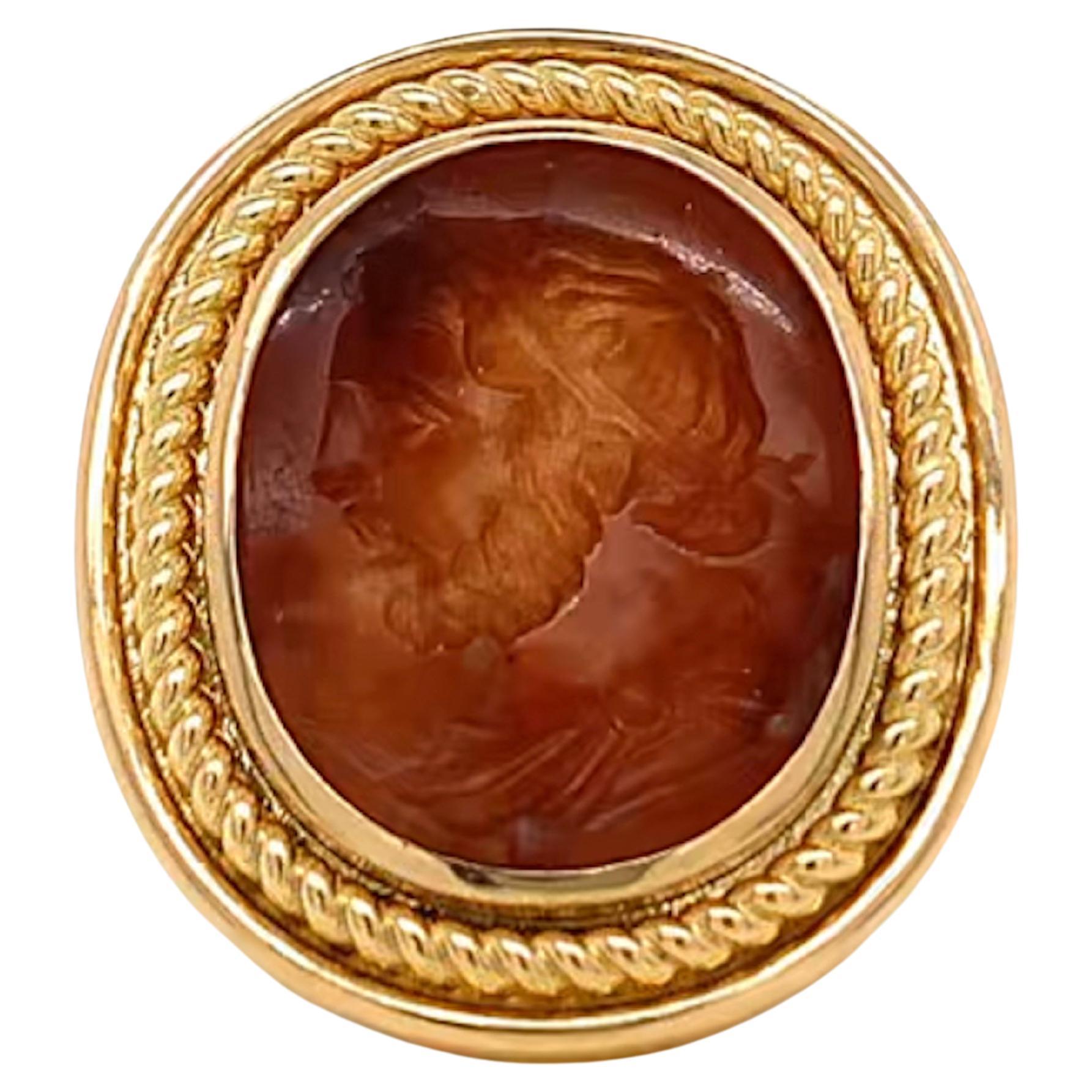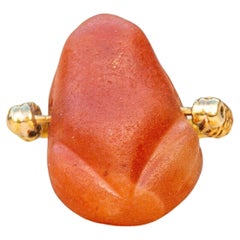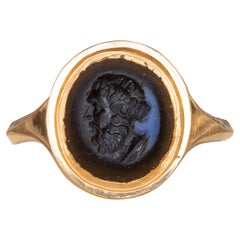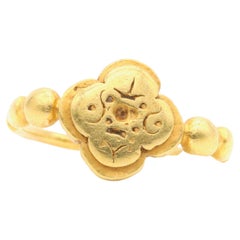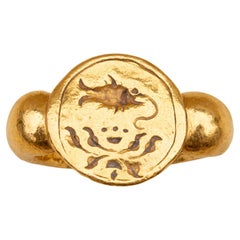
Ancient Gold Javanese Ring 9th-10th Century Fish and Lotus Flower
View Similar Items
Want more images or videos?
Request additional images or videos from the seller
1 of 14
Ancient Gold Javanese Ring 9th-10th Century Fish and Lotus Flower
About the Item
- Ring Size:6.25 US, Resizable
- Metal:
- Weight:22.6 g
- Style:
- Place of Origin:Java
- Period:
- Date of Manufacture:900
- Condition:Wear consistent with age and use.
- Seller Location:London, GB
- Reference Number:1stDibs: LU2845217784502
About the Seller
5.0
Vetted Seller
These experienced sellers undergo a comprehensive evaluation by our team of in-house experts.
Established in 2019
1stDibs seller since 2022
32 sales on 1stDibs
Typical response time: 14 hours
More From This SellerView All
- Ancient Javanese Gold Ring with Ruby Cabochon Java Indonesian Antique SolitaireLocated in London, GBA scarce early Javanese gold and ruby ring dating from the 7th-15th century Indonesian Classical period. As expected with Javanese gem-set gold rings m...Category
Antique 15th Century and Earlier Javanese Signet Rings
MaterialsRuby, Gold
- Rare Ancient Egyptian Carved Carnelian Frog Amulet Swivel Ring 18th DynastyLocated in London, GBThis rare Egyptian carved carnelian frog amulet dates to the Eighteenth Dynasty of the New Kingdom, circa 1300 BC. Frog amulets, depicting the goddess Heket, were commonly worn by both the living as a fertility charm and the dead to provide rejuvenation and a long afterlife. The ancient amulet is pierced horizontally and set into a later gold swivel mount, probably dating from the late 19th century. The design of the gold mount inspired by rings worn by the ancient Egyptians and Etruscans with its swivel bezel and coiled wire on the shoulders. The immense number of offspring made the frog an important symbol of fertility in ancient Egypt, and carved frog amulets were worn by women hoping for an easy delivery. This is exemplified with the goddess and protector of birth, Keket, who was depicted as a frog. After death, frog amulets would be placed within the wrappings of mummies, both men and women, in hope of a successful rebirth in the afterlife. The association between this amphibian and rebirth may have been induced by the fact that every year, millions of frogs spontaneously appeared out of the river mud and filled the fields after the annual inundation of the Nile. This caused the Egyptians to believe that they spontaneously generated themselves out of the river mud. The influence of frogs in Ancient Egypt can be seen in the language, the hieroglyphic sign for "one hundred thousand" was a tadpole, and one of the Egyptian terms denoting "frogs" is whm-anx, meaning literally "they who repeat life." Similar examples of ancient Egyptian carved...Category
Antique 15th Century and Earlier Signet Rings
MaterialsCarnelian, 22k Gold
- Georgian 18th Century Signet Ring with Ancient Roman Nicolo Intaglio of HerculesLocated in London, GBA superb ancient Roman nicolo intaglio set in a late 18th century gold signet ring. Nicolo intaglios are a particular type of intaglio ma...Category
Antique Late 18th Century English Georgian Signet Rings
- Ancient Roman Green Chalcedony Plasma Intaglio Ring of Goddess Victoria NikeLocated in London, GBA scarce ancient Roman intaglio dating from the 1st to 2nd century AD, depicting Victoria, the Roman Goddess of Victory (also known as Nike in Greek mythology). The cabochon gemstone is a chromium chalcedony, mottled green in colour. It was known in the ancient world as a ‘plasma’ stone and was widely used in jewellery and seals throughout the Roman Empire. However the mineral disappeared from use in the ancient world towards the end of the 2nd century AD when the known deposits were mined out. The intricate ancient engraving depicts a winged Victoria, draped and facing left, holding a palm branch in her right hand and a laurel leaf in her left. The green gem is translucent and contains small dotted black natural inclusions. The gemstone’s viridian green tones were linked to nature, growth, and prosperity, reflecting the Romans' appreciation for abundance and fertility. Victoria played a major part of Roman society, with many temples erected in her honour including one on the Palatine Hill which would house the spoils of war from Roman victories. She was, to the Romans, a symbol of victory over death, ultimately determining who would be successful during war. The high number of artistic and architectural dedications to her bear witness to the popularity of the goddess’ cult: Victoria widely appears on Roman coins...Category
Antique 15th Century and Earlier Italian Classical Roman Signet Rings
MaterialsChalcedony, 22k Gold
- Small Ancient Indus Valley Bead Ring Etched Carnelian Cone Antique Gold RingLocated in London, GBA superb and rare ancient Indus Valley etched carnelian bead ring. The conical shaped carnelian gemstone in the centre dates from the middle of the third millennium BC. Deep orange in colour with white patterned etchings, these beads originate from the Indus Valley civilisation (parts of modern day Pakistan and India). These carnelian beads were alkaline-bleached to develop the geometric white patterns visible on the exterior. The technique was first developed by the Harappans of the Indus Valley civilisation, and vast quantities have been found in archaeological sites all across the Indus Valley. The conical stone has been set in a later high-karat gold ring mount, the hoop is hollow and of circular cross section which widens towards the bezel. This design and shape is typical of ancient gold rings...Category
Antique 18th Century Indian Signet Rings
MaterialsCarnelian, Gold
- Georgian Gold and Carnelian Signet Ring Large 19th Century Antique Seal RingLocated in London, GBA large antique English Georgian era gentleman’s gold signet ring, circa 1830. In the centre there is a flat-cut and bezel-set octagonal carneli...Category
Antique Early 19th Century British Georgian Signet Rings
MaterialsCarnelian, Gold
You May Also Like
- Ancient 9th or 10th Century 22K Yellow Gold Javanese Sri RingLocated in Staines-Upon-Thames, GBAn ancient gold ring, with Sri inscription, in 22 karat yellow gold. This unique, unusual ring is steeped in history. Hailing from the 9th or 10th Century, this ancient piece of je...Category
Antique 15th Century and Earlier Signet Rings
Materials22k Gold, Yellow Gold
- Byzantine Gold Icon Ring, circa 6th-10th CenturyLocated in London, GBByzantine gold icon ring. The central flat circular plaque engraved and with niello, finely depicting the image of Christ with halo between two crosses, all to a slim fully rounded wire shank. Tested yellow gold, approximately 4.9 grams in weight, circa 6th - 10th century...Category
Antique 15th Century and Earlier Byzantine Signet Rings
MaterialsGold
- A Large Silver Gilt Byzantine Ring 8th-10th Century ADLocated in Firenze, ITA large silver gilt Byzantine ring from the middle to later Empire. The bezel shows saints Peter and Paul standing by a processional cross, both holding bibles. Note the shoulders of...Category
Antique 15th Century and Earlier Italian Byzantine Signet Rings
MaterialsVermeil, Silver
- Koi and Lotus Flower Ring, 18K Yellow Gold with DiamondsBy Lin Yuan JewelleryLocated in Southampton, GBKoi is regarded as the 'luck messenger' in Asian culture, lotus flower is seen as sacred for purity and rebirth and strength. Oval ring face: 9x11mm, band width: 2.5mm Enamel...Category
2010s Signet Rings
MaterialsDiamond, Yellow Gold
- Ancient Greek 4th Century BC Gold Coin Ring - 14K Gold Setting - Circa 1980'sLocated in Chatham, CAAncient Greek 4th Century (330 BC - 220 BC) Alexander the Great 1/4 Stater gold coin (22K gold) - the antique coin recess mounted (prong set from behind) in a 14K yellow gold ring setting with Greek key details to the shoulders - warm aged patina - stamped 585 (14K) - worn maker's mark - Greece - circa 1980's. Excellent antique / vintage condition - all original - coin not viewed outside the mount - no loss - no damage - no repairs - signs of age and use - ready to wear. Coin Size / Dimensions - 7/16" (1.2 cm.) Diameter. Coin Weight...Category
Late 20th Century Greek Classical Greek Signet Rings
Materials14k Gold, 22k Gold
- Ancient Greek Gold Intaglio Ring Circa 4th Century BCLocated in Chicago, ILA unique, museum quality ancient Greek gold ring, circa 4th century BC, likely a wedding ring. The ring is engraved with two wrestling Erotes. When Aphr...Category
Antique 15th Century and Earlier Greek Classical Greek Signet Rings
Recently Viewed
View AllMore Ways To Browse
Antique Jewelry Exchange
Solid 22k Ring
22k Solid Gold Ring
Signet Ring Flowers
22k Solid Gold Rings Jewelry
Ancient Wedding Ring
Buffalo Ring
Hindu God Antique
Between The Finger Ring Flower
Antique Fish Pendant
Gold Toe Ring
Hindu Pendant
Stirrup Ring
Circular Wedding Ring
Indonesian Wedding
10th Century Ring
Hindu Ring
Flowers Arrangement Lotus


